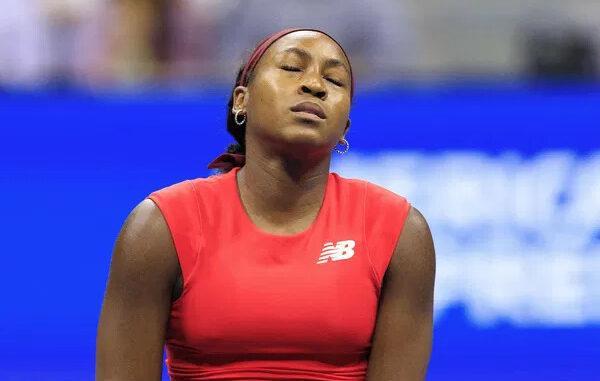
Coco Gauff, the 21-year-old American tennis prodigy, faced a sobering moment at the 2025 US Open, where her dreams of a second title at Flushing Meadows were dashed in a lopsided fourth-round defeat to Naomi Osaka. The match, played on September 1, 2025, at Arthur Ashe Stadium, saw the No. 3 seed fall 6-3, 6-2 to the resurgent Japanese star in just 64 minutes. For Gauff, who burst onto the scene with her 2023 US Open triumph, the loss was a stark reminder of the challenges she faces in a sport increasingly dominated by power and precision. In the aftermath, analysts and coaches have pinpointed one glaring flaw in her game—her forehand—that demands urgent attention if she’s to reclaim her place among the elite.
The clash with Osaka, a four-time Grand Slam champion, was billed as the tournament’s first blockbuster matchup, pitting two former US Open winners against each other. Gauff, who had shown resilience in earlier rounds, including an emotional victory over Donna Vekic where she battled through a panic attack, entered with cautious optimism. “Did I feel like I had a lot of confidence after my last match? Yeah, definitely,” she admitted post-match, reflecting on her third-round win. Yet, against Osaka, her game unraveled. The 27-year-old, who grew up in New York and calls Arthur Ashe her favorite court, was relentless, targeting Gauff’s forehand with surgical precision. The strategy paid off, as Gauff racked up 33 unforced errors, 20 from her forehand, compared to Osaka’s mere 12.
Gauff’s forehand has long been a vulnerability, a shot that lacks the consistency of her backhand or the explosiveness of her serve. Osaka, leveraging her own powerful forehand, exposed this weakness by directing second serves at Gauff’s body, limiting her ability to respond with clean strikes. “I felt so discombobulated on the court, because I was serving well but not returning well,” Gauff confessed, highlighting the disconnect in her game. Her serve, recently reworked with biomechanics expert Gavin MacMillan, held up with three aces and only five double faults—a marked improvement from the 22 double faults in her first three rounds. But the forehand’s collapse, with 11 unforced errors in the first set alone, handed Osaka the match.
Analysts have been vocal about the need for Gauff to address this flaw. Her forehand, often described as technically shaky under pressure, breaks down in high-stakes rallies, as seen when a mishit return gifted Osaka break points in the second set. This isn’t a new issue—Gauff’s forehand has struggled for consistency throughout her career, even during her 2023 US Open and 2024 French Open victories. To compete with the tour’s powerhouses like Osaka, Aryna Sabalenka, or Elena Rybakina, she must retool this shot to withstand their aggressive baseline play. “I just made way too many mistakes—way too many errors,” Gauff said, acknowledging the forehand’s role in her defeat. The match stats underscored the disparity: Osaka won 94% of her first-serve points and never faced a break point, while Gauff failed to earn a single break opportunity.
Despite the setback, Gauff’s resilience shone through in her reflections. “I am not going to let this crush me,” she declared, showing the same defiance that has made her a fan favorite. The emotional toll was evident—she admitted to breaking down to her team after the match—but she quickly shifted focus to the positives. “I think if I kept the way I was going in Cincinnati to here, I would have been out the first round,” she noted, crediting her improved serve for carrying her to the fourth round. Her ability to find perspective amid disappointment, a trait she’s displayed since her tearful 2019 US Open loss to Osaka at age 15, underscores her maturity. That earlier defeat saw Osaka consoling a young Gauff, a moment that cemented their mutual respect. “I look up to her a lot,” Osaka said post-match, praising Gauff’s conduct as a role model.
The road ahead for Gauff is clear: her forehand needs urgent refinement. Coaches suggest focusing on technique, particularly her grip and follow-through, to generate more power and control. This could involve drills to improve topspin consistency or tactical adjustments to avoid exposing the shot in rallies. With the China Open in Beijing starting September 23, Gauff has time to regroup and work on these changes. Her 2025 season has been a mixed bag—quarterfinals at the Australian Open, a French Open title, and a first-round Wimbledon exit—but at 21, she has years to hone her craft.
Osaka’s masterclass was a reminder of her own resurgence, reaching her first Grand Slam quarterfinal since 2021 after giving birth to her daughter, Shai. “I was super locked in,” Osaka said, describing her performance. For Gauff, the loss is a learning opportunity. “It’s disappointing for sure, but it is a step in the right direction,” she reflected, vowing to build on her progress. As she prepares for the Asian swing, the tennis world watches eagerly to see if Gauff can transform her forehand from a liability into a weapon, paving the way for another shot at Grand Slam glory.
Leave a Reply